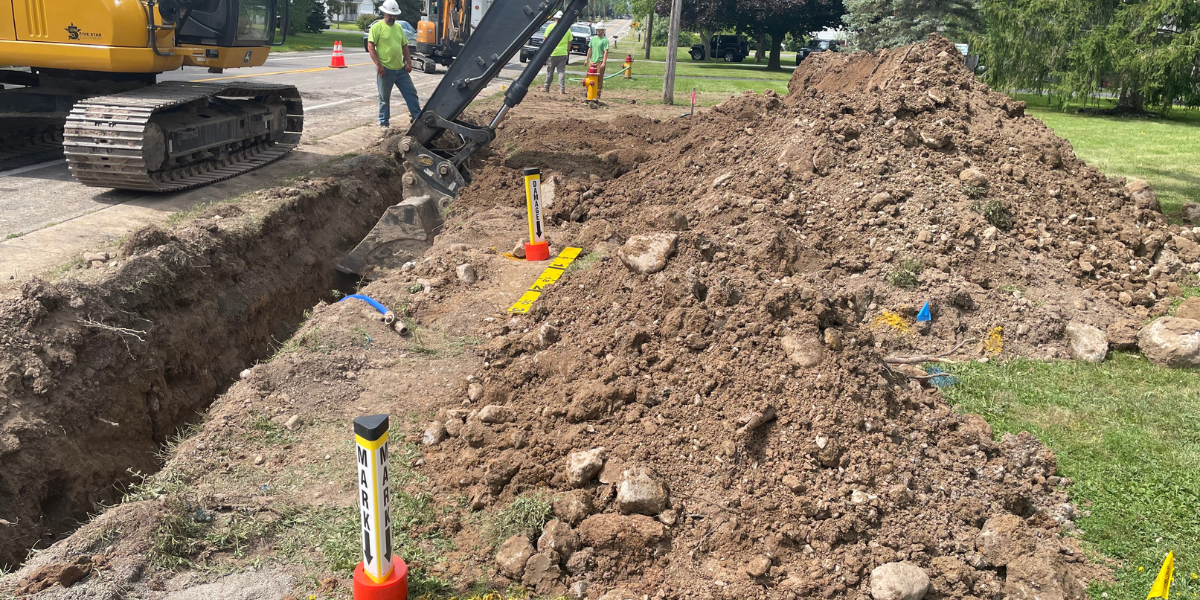
New York State Electric & Gas Corporation (NYSEG) and Rochester Gas and Electric Corporation (RG&E) are subsidiaries of Avangrid, a network that owns and operates eight electric and natural gas utilities, serving more than 3.3 million customers in New York and New England.
NYSEG and RG&E operate approximately 43,900 miles of electric distribution lines and 5,600 miles of transmission lines. The two also operate more than 18,900 miles of natural gas distribution pipelines and 125 miles of gas transmission pipelines. Combined, NYSEG and RG&E serve 1,292,900 electricity customers and 589,000 natural gas customers, which is about 40 percent of Upstate New York.
NYSEG and RG&E’s damage prevention programs are essential to ensuring the safety of their customers, employees, and surrounding neighbors. To do this, the Companies use the latest technology to monitor their natural gas delivery system around the clock, conduct aerial and ground inspections, carry out extensive maintenance, participate in UDig NY, and more.
The Companies work with industry groups to continually enhance natural gas pipeline safety and training methods. At the state level, NYSEG and RG&E work with regulators on programs designed to ensure the safe operation of the natural gas distribution system for customers and residents. As new technologies are developed in natural gas pipeline design, construction, inspections, and operations, they continue to invest in pipeline integrity programs that will allow for the safe and reliable delivery of natural gas.
The Companies’ damage prevention program is governed by the State of New York Department of Public Service’s 16 NYCRR Part 753, the protection of underground facilities. NYSEG and RG&E don’t enforce the Code Rule, but they educate on the Code Rule as the law that operators use when performing excavations.
There’s a big education component when it comes to damage prevention and digging. I’ll leave the various damage excuses to your imagination.
It used to be cheaper and easier to rip the lines out and move forward to get the job done, rather than take extra time to go around the lines. Now, safety is the biggest concern with shortcutting.
It’s not only important to educate contractors, but homeowners as well, and to encourage them to call 811 before they dig. It doesn’t matter if they’re planting flowers, homeowners are supposed to call 811. If you’re moving earth, you should submit a ticket.
Driving Preventative Measures
Before stepping into my current role, I served as a driver and locator for three years. When I inherited this program, it was a balancing act of an influx of dig tickets and damages, high turnover rates, disengaged contractors, and the absence of a team mindset. In March 2023, we partnered with Bermex, based upon the metering services company’s long-standing history and value, and began to develop the now flourishing NYSEG and RG&E damage prevention divisions.
Kenneth (Ken) Warner, a senior operations manager, and David Mills, an operations manager at Bermex, were integral in getting the program up and running. They were already familiar with the industry and shared my vision of the program.
Public safety is always priority number one, and the four supervisors on this project have helped drive those efforts. We always want to make a site safe first and foremost, and the Bermex damage prevention drivers are helping NYSEG and RG&E ensure that sense of safety by conducting thorough investigations and educating contractors and homeowners.
It’s working as a team that’s leading to a notable decrease in certain damages.
The Common Ground Alliance, an organization dedicated to preventing damage to underground utility infrastructure and protecting those who live and work near important assets, issued a “50 in 5” challenge to reduce damages to critical underground utilities by 50 percent in five years. The “50 in 5” call-to-action encourages the damage prevention industry to concentrate on the following three areas that contribute to more than 76 percent of all damages:
- Effective and consistent use of 811
- Key excavator practices
- Accurate, timely utility locating
At first, I thought that was a pretty lofty goal. Fiber installs are going crazy across the country. Going into 2023, right from the get-go, with the help of UDig NY, we were able to coordinate with one of the larger fiber companies in Northwestern New York that was doing most of the installs. We coordinated with Bermex, USIC, the fiber company, contractors, and sub-contractors to do walk-throughs on-site, before and during the installation of all the fibers. As of now, we’re roughly at a 56 percent reduction of gas hits due to fiber installs thanks to these preventative measures.
I couldn’t be happier with our trending results and program. It’s nice that everybody shows the same vision and goals. I can send an email out and they know the expectation, what I’m looking for, and what I see as the vision for the program. I can just say, this is what we need to do, and we collectively come together and now we do it.
By setting clear expectations, maintaining transparency, and keeping clear lines of communication, we’ve built a great program.
